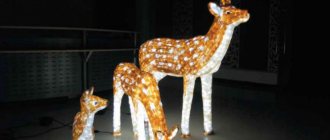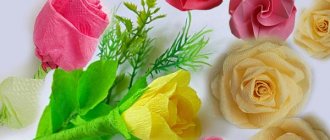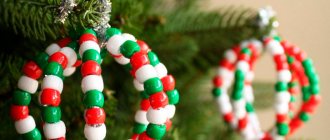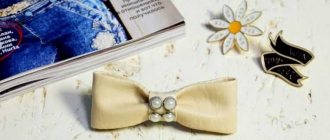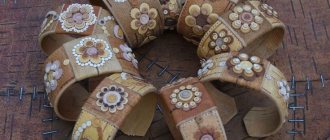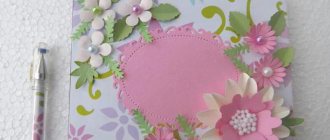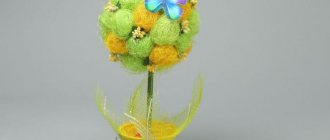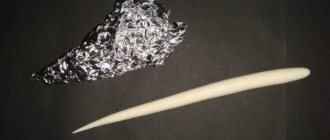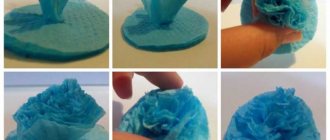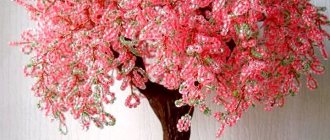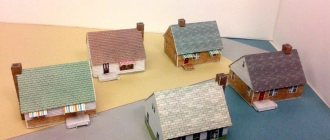Preparing for work
Wire is considered a complex material. It is not easy to work with, it requires effort. To facilitate the creative process, experienced craftsmen use the following tools:
- wire cutters for cutting off pieces of wire of the required length;
- pliers, needle-nose pliers for twisting and bending fragments;
- electric soldering iron, for fastening thick copper wire;
- hammer, anvil, to give the material a flattened shape;
- a piece of sandpaper for polishing;
- scissors;
- electrical tape or adhesive tape, for fastening parts in intermediate stages of work.
- The idea of a composition is sometimes the most unexpected, so additional instruments may be included in this list of instruments.
Before you start
Before you begin to master handicraft techniques and materials that are new to you, you should first stock up on a sufficient amount of materials:
- copper and aluminum wire of different thicknesses;
- colored threads, paper, foil, shreds;
- multi-colored beads, beads, sequins;
- plasticine of different colors;
- dry twigs and roots of interesting shapes;
- chenille (fluffy) wire of different colors.
Of course, making wire crafts without tools is, if not a pointless undertaking, then certainly unpromising: once you pick up this material, you will soon realize that you can’t do much with just your fingers. What tool do you need?
- First of all, wire cutters for biting off wire, pliers and round nose pliers for bending material.
- Soldering iron - many crafts, especially large ones made of thick copper wire, require soldering at least at key points: you will need known skills in handling a soldering iron, which are easy to acquire by practicing on unnecessary scraps, soldering them using rosin and tin. To work with a soldering iron, you will need tweezers (medical or special), since you will not be able to hold the heated wire in your hands. And for completely novice handicraftsmen, let us remind you that only copper wire is soldered; for aluminum there are other connection methods.
- Small Hammer and Anvil - As you will see, some crafts have flattened parts. A suitable massive metal object with a flat surface is most often used as an anvil.
- Fine-grained flat file, a piece of sandpaper.
- Scissors - cut out the necessary elements from paper and scraps.
- Scotch tape or electrical tape - for temporarily connecting individual parts.
These are just the most necessary tools, which in any case will be useful when creating most crafts. As creativity progresses, the need may arise for other, special tools.
Read also DIY crafts for Valentine's Day, photos, examples
Types of wire
Wire surprises with its plasticity and great potential for use in the design of jewelry and decorative souvenirs. It is widely used to create costume jewelry. In rare cases, material is taken from noble metals. Basically, simple, inexpensive wire is used:
- copper;
- aluminum;
- costume jewelry, sold in creative goods departments.
Jewelry wire is created specifically for creative works. Its alloy contains metals that have valuable artistic properties - softness, strength, ductility, beautiful appearance. The cross-section has a round, semicircular or square shape. On sale you can find copper wire with a silver coating with a flat section, aluminum with a shiny coating. Aluminum creative material resists corrosion and negative environmental influences.
They also work with technical materials consisting of pure copper and stainless steel, but the process is complicated by the need to clean it of insulation.
Operating rules
Experienced craftswomen who make exclusive jewelry from wire give advice on working with this material:
- for heavy beads, use strong wire;
- the larger the diameter of the metal material, the more the hole inside the beads is filled, and accordingly, the more resistant to wear it is;
- the distance between the beads should allow them to move freely.
Wire crafts. What do you need to know?
Before you start making your own wire products, it is recommended to study photos of DIY wire crafts on the Internet. This will make sure that such products look quite original and can become an excellent interior decoration.
Wire is a material characterized by a high level of flexibility, as a result of which it practically does not break, which means you can turn even the most complex ideas into reality, giving the craft one shape or another.
From wire you can create crafts not only for the home, but also for the garden. For example, it could be flowers, trees.
First steps
Wire-based products amaze with their beauty. I would like to join this art and also create something beautiful. However, in order not to encounter the beginner's disappointment syndrome, you need to start with simple crafts, gradually complicating them.
The first steps in weaving can be simple contours of animals, fantasy people, and various objects. For example, to make a simple Christmas tree, it is enough to bend the wire, why bend its halves symmetrically.
If you make blank rings, and then connect them in groups of three to five pieces with another ring, you will get a simple bracelet. A garland of rings will decorate a child's room. Children from preschool age and older are gladly involved in the work of creating wire products.
Souvenir “Heart” made of copper wire
You can combine wire with other materials. For example, a simple but very cute heart made of copper wire can be fixed on a wooden block.
Let's make a heart.
Folding a heart
Twist the wire at the base of the heart.
Twist the wire
We lay out the wire a second time. We fix the end of the wire at the bottom of the heart.
Double heart made of wire
We make a hole in a wooden cube, pour a little glue there and insert a wire with a heart there. The result will be a wonderful souvenir, which, by the way, can be conveniently used as a stand for notes, business cards and even photographs.
Wire souvenir with heart
Wire cat
Wire flowers
Like any creative activity, working with wire material develops children’s motor skills, memory, ability to logic, fantasy, imagination, perseverance, introduces them to creativity, and helps them understand the world around them.
A thin wire is suitable for children's hands; it is easy to bend and deform. At the beginning of work, a flower with a stem is drawn on paper; during the work process, the blank is applied to the template for comparison. To strengthen the stem, it is wrapped with a double fold of wire. The center of the flower is a ring, the petals are wire wrapped around the ring in waves.
Christmas tree
To work, you will need two types of wire - thick and thin. From the thick one they make a base, a triangular outline, forming a beautiful curl on top. Various or identical beads are strung on a thin wire and loosely wrapped around the main contour. Such a Christmas tree is good for giving to friends as a souvenir, for decorating a real Christmas tree, and also as an independent decorative element.
Aluminum wire
Using aluminum wire, make:
- hot coasters;
- candlesticks;
- various frames;
- interior flowers and trees;
- baskets.
To create an original product, experienced craftsmen advise first drawing or drawing a life-size sketch of the craft. This will simplify the work and allow you to bring your idea to life in detail.
Aluminum wire is often used to make New Year’s interior decor:
- Christmas trees;
- angels;
- bells;
- hearts;
- snowmen;
- curly inscriptions.
It’s easy to complement such crafts with pendants made of beads, rhinestones or colored threads.
To create an interior tree you will need a stable base and five identical pieces of wire. The blanks are fixed on a stand, bent at different angles and complemented with pendants made of beads or beads.
It’s easy to make beautiful interior elements from wire of different colors or decorative threads.
The colored parts are wound tightly onto a wire frame, following a certain pattern. In this way, original wall panels or small souvenirs are made.
When planning to make a craft from wire, you need to first think through all the details and create a sketch of the product. This will help you adhere to the intended patterns and maintain symmetry in your work.
Butterfly
The Christmas tree and the flower were flat figures. The butterfly is considered a craft of a more complex level; in it you need to fill the void of contour details. The master class includes steps:
- Starting from the body of the butterfly, form the outline of the upper wings;
- By laying the wire along the body, they create the outline of the lower wings;
- The wings are strengthened by wrapping the body in a double fold;
- They move on to filling the voids inside the contours with beautiful curls;
- Pull the ends of the wire from above, cut off the excess, and twist the antennae.
The butterfly is ready. Using the same algorithm, you can create figures of animals, flowers, and people. The filled space inside the contour provides the product with a finished look.
Angel made of wire and beads
A wire angel with beads intertwined looks gentle and airy. For work, take thin and thick wire. A frame is created from thick wire material. Blue beads are strung on a thin wire to fill the outline of the body, red beads are used to fill the neck and arms, and white beads are used to fill the wings and a halo above the head. The craft turns out to be sophisticated and elegant. There is no shame in giving it to friends and family for New Year or Christmas.
Crafts made from wire and thread
In our opinion, interesting crafts are made when using ordinary copper or aluminum wire and colored floss. The most common are all kinds of flowers and funny little animals made using this technique.
Most of these crafts are voluminous: as can be seen in the photos presented, the threads play the role of winding on a wire frame of the desired shape. For example, a flower petal is made from wire twisted into a spring on a rod of a suitable diameter (from a fountain pen, a long nail, a knitting needle, an even piece of solid steel wire, etc.), then a thread of the desired color is pulled between the wire coils, laid in a dense layer .
The body of the animal, its legs and tail, as well as the head are formed from multi-layered thread wound around the frame. Eyes, nose - made of beads or suitable beads, small buttons; whiskers (for a cat) - from pieces of fishing line or thin elastic wire.
Read also DIY snowman craft: instructions, photos
Money Tree
Familiar objects sometimes become boring, you want to refresh the interior, add new interesting things to it. The money tree seems complicated, but in practice it is easy to create if you have basic skills in working with wire. You will need:
- copper wire of the required diameter;
- large and small beads;
- decorative coins;
- needle nose pliers;
- needle file;
- silicone-based glue for covering cuts.
There is no specific algorithm for creating a money tree. Everyone creates it the way they like. The common part is the barrel. Branches and curls with stringed beads are attached to it. The type of tree depends on the fantasy and imagination of the master.
Wire and beads
Crafts made from beads and wire require a little skill and patience. When working with two types of materials, you should start small.
Beautiful small fish with beaded scales, butterflies with multi-colored wings, various keychains, jewelry, bracelets, necklaces and many other simple designs can be created from such simple, at first glance, objects.
A very fashionable idea from these materials is various trees. One of the simplest types is the tree of life. To work you will need:
- Copper or aluminum wire. Its thickness varies depending on the size of the future tree.
- Beads and beads. It is necessary to select the size of their holes to suit the thickness of the wire. So that they don’t dress tightly on her, but also don’t hang loose.
- Round nose pliers, wire cutters, a file (a small file for grinding sharp edges of wire) and silicone glue.
There is no single principle for creating the tree of life. It can be made from aluminum or copper wire and placed in a round or square pot. The number of branches and flowers is limited only by your creative imagination.
Napkin holder
Like the money tree, this product depends on the creative vision of the master and can be anything. At the base of the stand is a napkin holder; the side walls are presented in the form of a wicker outline with curls.
For work, use thick wire, since a pack of napkins has significant weight. Bends and curls are formed using needle-nose pliers. To avoid scratches, drop a drop of silicone glue onto the ends of the wire. Rough areas of the surface are polished with sandpaper.
Cement crafts for the garden: more than 20 ideas, instructions and master classes
Having a summer cottage, you always want to arrange it, and in some special way. However, garden decorative elements are not cheap, and they are not durable.
People with a developed imagination can make original crafts for the garden from cement, which is not only highly resistant to various types of influence (frost, hail, sun, water), but also accessible (you can buy it at any hardware store for a reasonable price).
The content of the article:
The nuances of working with cement mortar
For decoration and design additions, you can use flower pots, flowerpots, figurines of fairy-tale characters or plant objects made with your own hands from cement. This material cannot be called capricious, and most people have a lot or little experience working with it. Still, there are several important rules that must be followed to ensure that crafts made from cement mortar are of high quality and durable.
The technology for preparing the mixture itself is as follows . The main components are prepared: cement, construction sand, water and tile adhesive (for better ductility and reducing the risk of microcracks). For 1 part of cement, take 2 parts of sand (for greater strength, you can take 1 part) and 1 part of glue. Lastly, add water in small portions to the consistency of thick sour cream. It is convenient to work with such a mixture: it does not flow and at the same time is quite plastic.
All cement products require prolonged drying. Hardening can last up to 7 days. To prevent the surface from cracking, the finished creation is covered with polyethylene. To give the product a beautiful and correct shape, the base is placed on a mound of sand or buried in it (depending on the idea), but not on a flat surface.
After complete hardening, the figure must be coated with a primer and only after that can paint or varnish be applied. If the craft has roughness and other irregularities, it should be refined with sandpaper and a file before priming.
In addition to cement mortar, concrete is sometimes used, which is characterized by the presence of large fractions (pebbles or crushed stone) and increased strength. Crafts made from concrete for a summer residence can be represented by large monolithic boulders, and this material is also convenient to use to create a base for various compositions (a platform for a fountain, a pedestal for a sculpture, a terrace for flower pots, etc.).
Another material similar in its application is gypsum. It is not as strong as cement, but more plastic and decorative. It can be used to create hollow shapes. For garden creativity, molding (sculptural), acrylic and architectural types are used. When working with this material, you need to take into account its rapid hardening. It is often recommended to add it to cement mortar when creating sculptures.
Interesting ideas for beginners
Having no experience in using cement for decorative purposes, it is better to start with something simple that does not require modeling skills and obtaining the desired consistency. The first exhibits in your garden can be cute mushrooms, colorful balls or original flower pots.
To make a mushroom you will need an old rubber ball (the size of the cap will depend on its size), a plastic bottle (it will become the basis for the stem, its size should be proportional to the cap), a metal rod to attach the cap to the stem. The ball is cut into two halves, one of which is placed in a bucket of sand and pressed evenly. Next, cement mortar is poured into the resulting form and leveled.
The bottom and neck of a plastic bottle are cut off and inserted into the filled form in the center, immersing it by 1 - 2 cm. Then, using a long iron rod, the future stem and cap of the mushroom are connected and the cavity inside the bottle is filled with the solution. The product should harden for several days, after which you need to remove the piece of the ball and the plastic cylinder.
After a few more days, the product can be coated with paint and decorated with various elements. Mushrooms of different sizes look impressive on the plot in the form of a small clearing. It is also worth noting that your imagination may tell you to use other containers (bowls, jars) and methods for making garden mushrooms.
It’s enough to just make an openwork ball that seems so light and airy. For the base, use a balloon (the size of the future shapes depends on how much you inflate the balloon). Next, any rope is placed in the prepared solution and then the ball is wrapped around it.
Do not wrap the base too tightly; you need to leave enough holes for further removal of pieces of the burst ball. When the product is dry, you can begin decorative coating.
If you cover the balloons with cement mortar with a small amount of gypsum added for faster hardening, you can get original garden lanterns or flower pots.
Using this technique you can also make vases for dried flowers. In this case, not only the outer side, but also the inner side is subjected to decorative painting.
If you pour the solution into a small hole in rubber balls, you can get monolithic balls of different sizes. Painted in different bright colors and randomly scattered around the garden, they will become a laconic and stylish decoration.
Using plastic containers, you can make a flower pot for Crassula and Crassula Ovata cacti. The container is wrapped in a plastic bag, and a bag of clay or sand is placed inside so that the container holds its shape. Next, it is covered with cement mortar. After complete drying, all auxiliary materials are removed, drainage holes are made in the bottom using a drill, the product is primed and painted.
It's very easy to make a flowerpot using a plastic bucket or vase and another suitable container.
One container is inserted into another, and the solution is poured into the space between them. The result is a high-quality product that can be further decorated by showing your imagination to the fullest.
Flowers planted in flowerpots made from crossed palms look attractive. To create such a masterpiece, use ordinary rubber gloves, which are evenly filled with the solution. For rigidity, you need to insert a thick wire rod into each finger. To ensure a high-quality product, air bubbles must not be allowed to form.
When the gloves are filled, they are given the desired shape and fixed. After a few days, the rubber is cut and removed. If you need to connect two palms, then use the same solution. At the final stage, the surface is polished with sandpaper, primed and painted.
Complex figures with a frame
It’s more fun to decorate your country house with sculptures of animals and mythical characters. Such creations involve the preliminary production of a durable frame and layer-by-layer application of cement mortar.
Interesting flowerpots can be made using buckets from construction mixtures. At the first stage, a container of suitable size is wrapped with a plaster mesh and covered with a thick layer of cement. At the second stage, until complete hardening, decorative adjustments are made, making an imitation of an old stump with natural wrinkles on the bark.
A monolithic figure of a hippopotamus would look appropriate near artificial reservoirs. The place for it must be determined immediately and carefully aligned, since in the future the figure will be stationary.
Two elongated plastic basins, which must be fastened with wire, are suitable as a frame. Another option is also possible: a thick cement solution is covered on top of a pile of broken bricks or crushed stone.
The figure itself does not contain complex elements and is easy to perform. After hardening, the product is treated with fixing impregnation and dry pigment for concrete, rubbing the powder with a hard sponge.
More complex sculptures are made in several stages: 1) making a frame from wire and foam plastic or containers; 2) covering the workpiece with a plaster mesh; 3) applying the mixture in several layers; 4) formation of small details (facial features, special texture, folds of clothing, etc.); 5) priming and painting the finished work.
Flowerpots in the shape of swans will become an elegant decoration of the garden. The body frame is an old plastic basin, the neck is woven wire. The head, wings and imitation plumage will have to be made from a cement mixture, showing the skills of a sculptor.
Monolithic figures have a significant weight, so as an alternative there is a way to create lightweight large objects. You can decorate your garden with boulders of different sizes.
To make them, any unnecessary and lightweight material (cuts of polyurethane foam, plastic bottles, polystyrene foam) is tied into a tight lump with wire.
The resulting base is wrapped in a plaster mesh and covered with thick cement mortar. The more irregularities and protrusions there are, the more natural the “stone” will look.
Small garden figurines are made from a mixture of cement with the addition of gypsum or Portland cement.
Here you can use the manufacturing methods described above, as well as any basics: old toys, items of clothing, household utensils.
Wire cloud
A cloud with wire rain looks interesting as a decorative item. The figure is simple, but surprisingly harmonious. The outline of the cloud has an oval, uneven shape, with light waves. At the bottom of the cloud outline there are long pieces of wire with drops formed at the end. The cuts represent rain.
There are many photos of wire products on thematic Internet resources. You can’t take your eyes off some of them; you want to make the same thing and decorate your home with it.
Copper wire butterfly
First, you need to learn how to make curls from wire. It is convenient to use special tweezers for this purpose.
Making a curl with tweezers
Only on the basis of such curls can you make a wonderful version of a wire craft for children - an elegant butterfly with weightless openwork wings.
Fold the bottom of the wing
Twist the second wing using tweezers.
Twist the wing
Glue a large bead in the center.
Glue the bead
